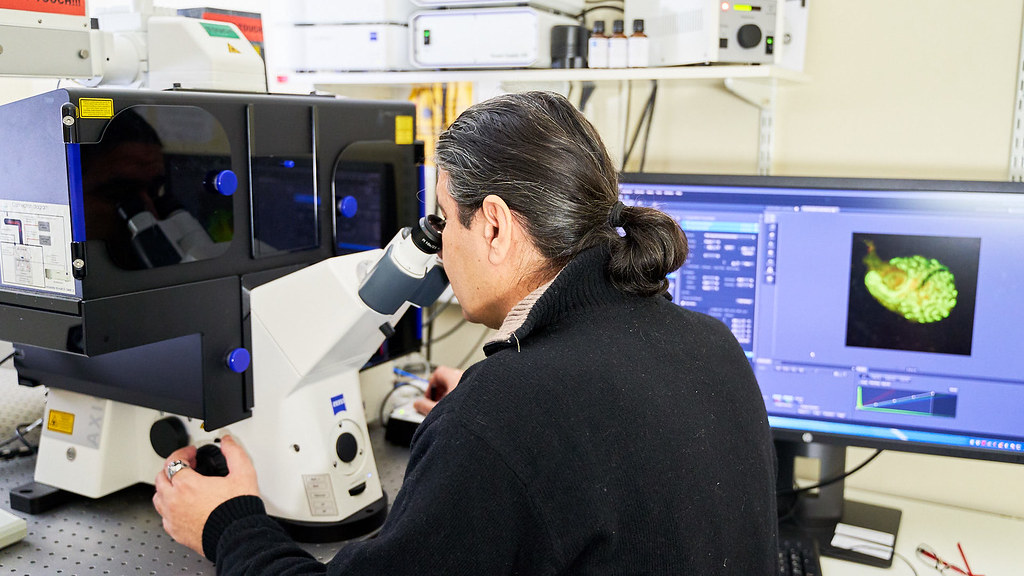
Our instruments form a part of a wider imaging network within Bath. Learn more about the Light Microscopy Research Network at Bath.
Our unit encompasses several approaches to imaging biological and non-biological samples. The common denominator of these is the use of a light source, usually in the visible spectrum (photons), to produce a signal, which is then read by a suitable detector (our eyes or a specialised electronic device). This is in contrast to electron microscopy, where the 'light' source is actually a beam of electrons.
Our bioimaging instruments are used in a variety of projects, including studies of inflammatory diseases, cancer research, stem cell biology, diabetes, neuroscience, developmental biology, and drug discovery.
Training and assistance are provided at all levels, including guidance on planning your imaging experiments and preparing your samples, and help with image and data analysis.